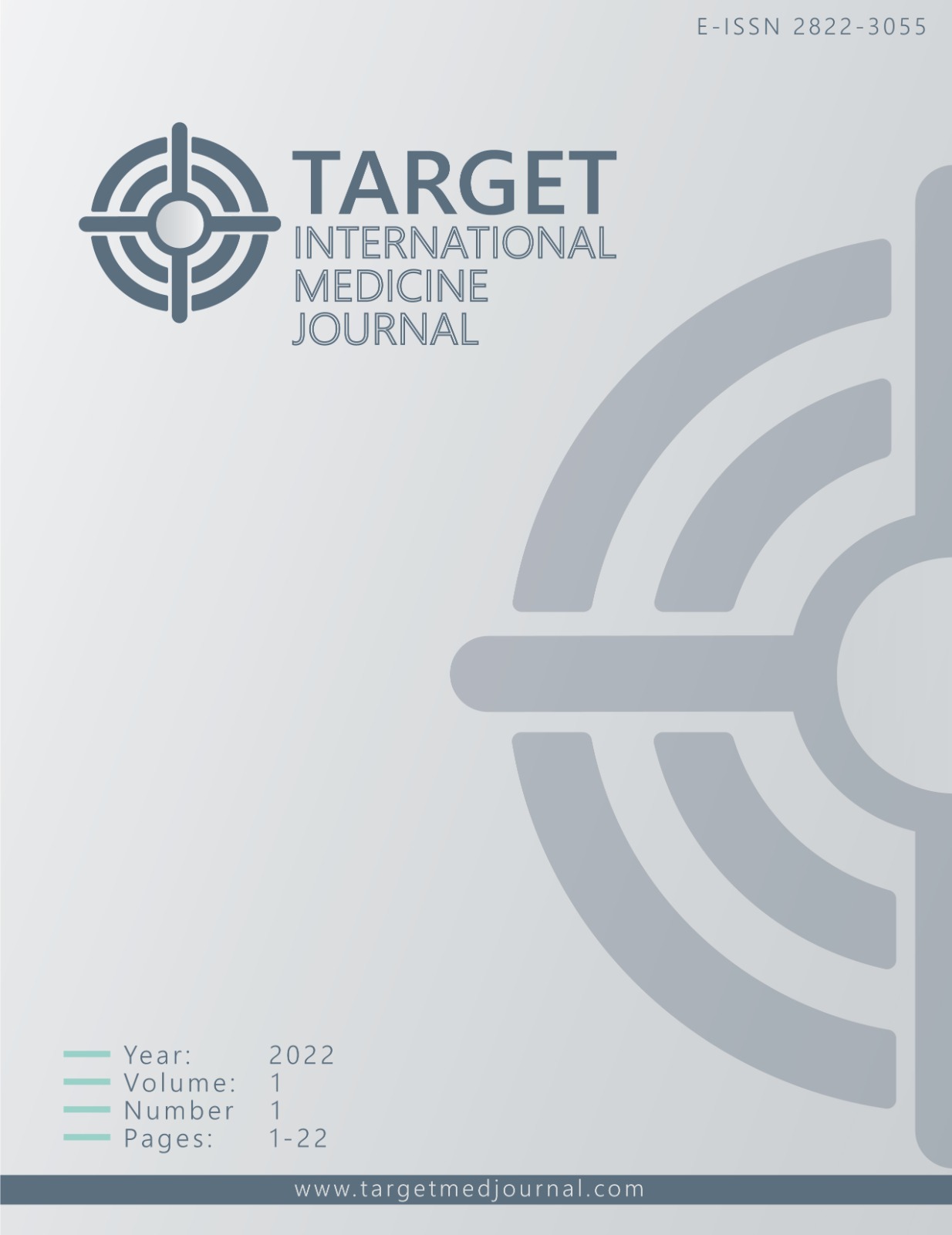Retrospective analysis of lactate levels, lung i̇nvolvement and treatment methods of patients with COVID-19 who applied to the emergency department
Author :
Abstract
Keywords
Abstract
Aim: Covid 19 affects more than 6,000,000 confirmed cases. It can be asymptomatic in the case of the disease, or it can be observed in simpler symptoms such as fatigue, myalgia, fever, sore throat and dry cough that can be treated on an outpatient basis. However, in more severe cases, septic shock accompanied by dyspnea and/or hypoxemia and especially Acute Respiratory Distress Syndrome (ARDS) may develop. this condition has a high mortality. When there is hypoxemia, cellular anaerobic respiration predominates. In this case, an increase in plasma lactate levels, which is an anaerobic respiratory metabolite, occurs.
Materials and Methods: Patient data were accessed through the patient registration system. Age, gender, comorbidities, blood lactate levels, and lung tomography reports (Co-Rads Classification) of the patients were examined.
Results: 135 cases were excluded. While 43.2% (n=60) of the patients were male, 56.8% (n=19) were female. It was determined that 74.8% (n=104) patients had negative tomography and 25.2% (n=35) patients had positive tomography. When the treatment types of the patients were examined, 49.6% (n=69) were treated as outpatients, 43.2% (n=60) were treated as inpatients in the hospital ward, and 7.2% (n=6) were treated in the intensive care unit. Pulmonary involvement rates of outpatients were the least, increased in those who were treated in the ward, and the highest rate of involvement was found in those who were hospitalized in the intensive care unit. This situation was found to be statistically significant (p<0.001). The lactate level of the patients hospitalized in the intensive care unit was found to be statistically significantly higher than the lactate level of the patients receiving outpatient treatment (p 0.002).
Conclusion: In predicting the disease treatment method in patients with Covid 19; It was suggested that it should be followed in terms of blood lactate level and lung tomography involvement.
Keywords
- 1. Huang C, Wang Y, Li X, et al. Clinical features of patients infected with 2019 novel Coronavirus in Wuhan, China. Lancet. 2020;395:497–506.
- 2. Akcay S, Ozlu T, Yilmaz A. Radiological approaches to COVID-19 pneumonia. Turk J Med Sci. 2020;50:604-10.
- 3. Nguyen HB, Rivers EP, Knoblich BP, et al. Early lactate clearance is associated with improved outcome in severe sepsis and septic shock. Crit Care Med. 2004;32:1637-42.
- 4. Diamond M, Peniston Feliciano HL, Sanghavi D, Mahapatra S. Acute Respiratory Distress Syndrome In: StatPearls [Internet]. Treasure Island (FL): StatPearls Publishing; 2022 Jan. 2021 Nov 9.
- 5. Peng JM, Qian CY, Yu XY, et al. China Critical Care Clinical Trial Group (CCCCTG). Does training improve diagnostic accuracy and inter-rater agreement in applying the Berlin radiographic definition of acute respiratory distress syndrome? a multicenter prospective study. Crit Care 2017;21:12.
- 6. Pekcevik Y, Belet U. Patient management in the radiology department, the role of chest imaging during the SARSCoV-2 pandemic and chest CT findings related to COVID-19 Pneumonia. Journal of Tepecik Education and Research Hospital 2020; 30 (Supplementary issue):195-212.
- 7. Mo X, Jian W, Su Z, et al. Abnormal pulmonary function in COVID-19 patients at time of hospital discharge. Eur Respir J. 2020;55.
- Pathol. 2020;49:E009.
- 9. Fan L, Liu S. CT and COVID-19: Chinese experience and recommendations concerning detection, staging and followup. Eur Radiol. 2020;30:5214–16.
- 10. British Thoracic Society’ statement . BTS guidance on respiratory follow up of patients with radiologically confirmed COVID-19 pneumonia 2020. Acces link: file:///C:/Users/test/Downloads/Resp%20follow%20up%20 guidance%20post%20covid%20pneumonia.pdf access date 20.02.2022.
- 11. Prokop M, van Everdingen W, van Rees Vellinga T, et al. COVID-19 standardized reporting working group of the dutch radiological society. Radiology. 2020;296:97-104.
- 12. Bellini D, Panvini N, Rengo M, et al. Diagnostic accuracy and interobserver variability of CO-RADS in patients with suspected coronavirus disease-2019: a multireader validation study. Eur Radiol. 2021;31:1932–40.
- 13. Yu M, Liu Y, Xu D, et al. Prediction of the development of pulmonary fibrosis using serial thin-section ct and clinical features in patients discharged after treatment for COVID-19 pneumonia. Korean J Radiol. 2020;21:746–55.
- 14. Fu YQ, Bai K, Liu CJ. The impact of admission serum lactate on children with moderate to severe traumatic brain injury. PloS One. 2019;14:e0222591.
- 15. Green JP, Berger T, Garg N, Shapiro NI. Serum lactate is a better predictor of short-term mortality when stratified by C-reactive protein in adult emergency department patients hospitalized for a suspected infection. Ann Emerg Med. 2011;57:291–5.
- 16. Bernardin G, Pradier C, Tiger F, et al. Blood pressure and arterial lactate level are early indicators of short-term survival in human septic shock. Intensive Care Med. 1996;22:17–25.
- 17. Shapiro NI, Howell MD, Talmor D, et al. Serum lactate as a predictor of mortality in emergency department patients with infection. Ann Emerg Med. 2005;45:524–8.
- 18. Vincent JL, Quintairos E, Silva A, et al. The value of blood lactate kinetics in critically ill patients: a systematic review. Crit Care. 2016;20:257.
- 19. Singer AJ, Taylor M, Domingo A, et al. Diagnostic characteristics of a clinical screening tool in combination with measuring bedside lactate level inemergency department patients with suspected sepsis. Acad Emerg Med. 2014;21:853–7.
